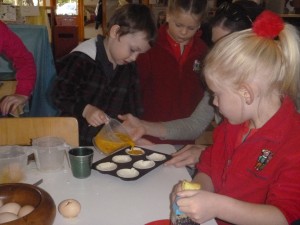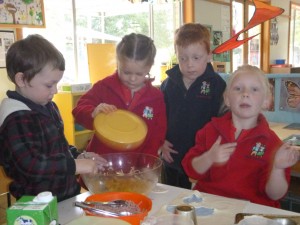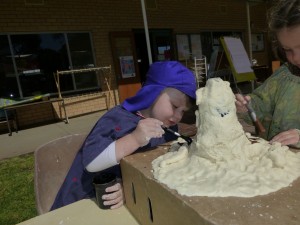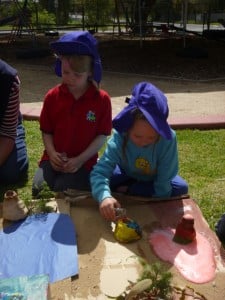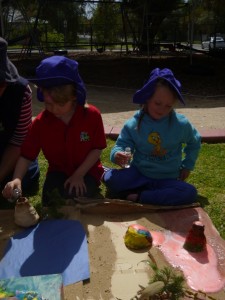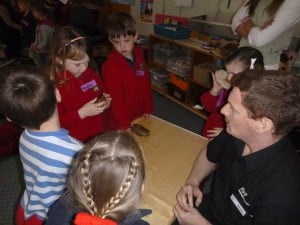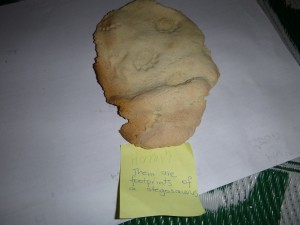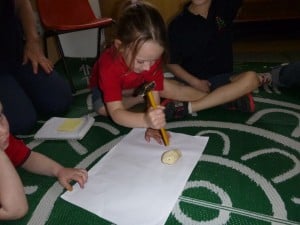Squeezing orange juice seems such a simple activity and one that at home we have probably relegated to technology with an electric juicer. Like lots of activities that we choose to do more quickly and easily with some sort of electric equipment, when you go back to the fundamentals, it’s a fantastic learning opportunity for young children. Our pre-service teacher, Bree, chose to do this with the children – and so much learning resulted!
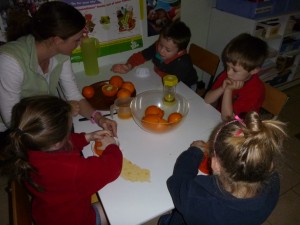
The conversations flowed as freely as the juice and everybody contributed!
Put in terms of the EYLF/VEYLDF Learning Outcomes: lots of connections were made to their own orange trees, or someone else’s or buying it in the supermarket, when they drink it, what other juices they like, what else they do with juice (icypoles etc). The children’s sense of identity and family were affirmed, and managing the activity by themselves (with a little help) gave them a great sense of agency and achievement.
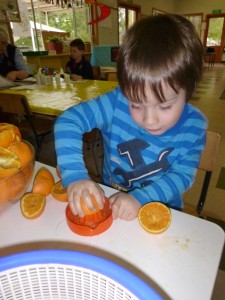
The children’s sense of connections with the natural world and with a community of friendly people who share their surplus produce (yes, it does still happen!) was also affirmed. (Bree brought these from her own tree).
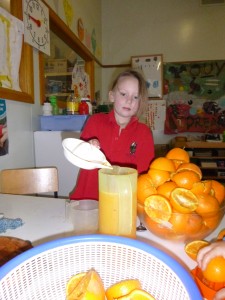
Their WellBeing was strengthened by the exercise of twisting with their wrist (a little mantra soon developed “Twist with your wrist” which they chanted as they did it!) and the “incidental” but carefully planned conversations around healthy food, fruit and vegies etc.
Their Learning was enhanced by the opprtunities for hypothesising – how long would it take, how many could they do in a certain time span (they used a timer to help them); and for maths around counting, dividing and estimating. (Some children could confidently, and accurately, predict how many pieces there would be after 2 oranges were cut in half) There was also practical learning – how to get rid of the bits of skin or seeds? a strainer of course. And what can we do with the skins – which Bailey suggested could go to his pigs, so they did.
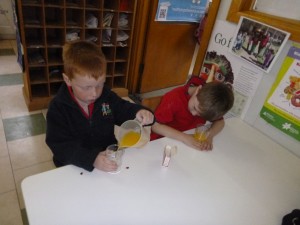
And then there was the sharing – pouring, making a judgement about how much is “about a half of a glass”? and being aware of fairness in their own and other’s pouring. There was acceptance of mistakes when someone had a spill, and also the need to clean up after a mistake. And finally the drinking – yum!
A final point is one that might get overlooked – the value of offering a LOT of oranges to the children to squeeze meant that nobody had to worry that they wouldn’t get a turn. They could do it more than once, and there was a wonderful sense of abundance which helps us all to feel good.
Thanks Bree! What a fantastic learning experience!
